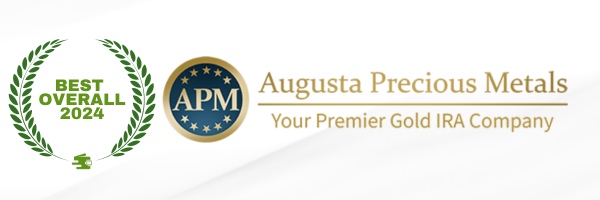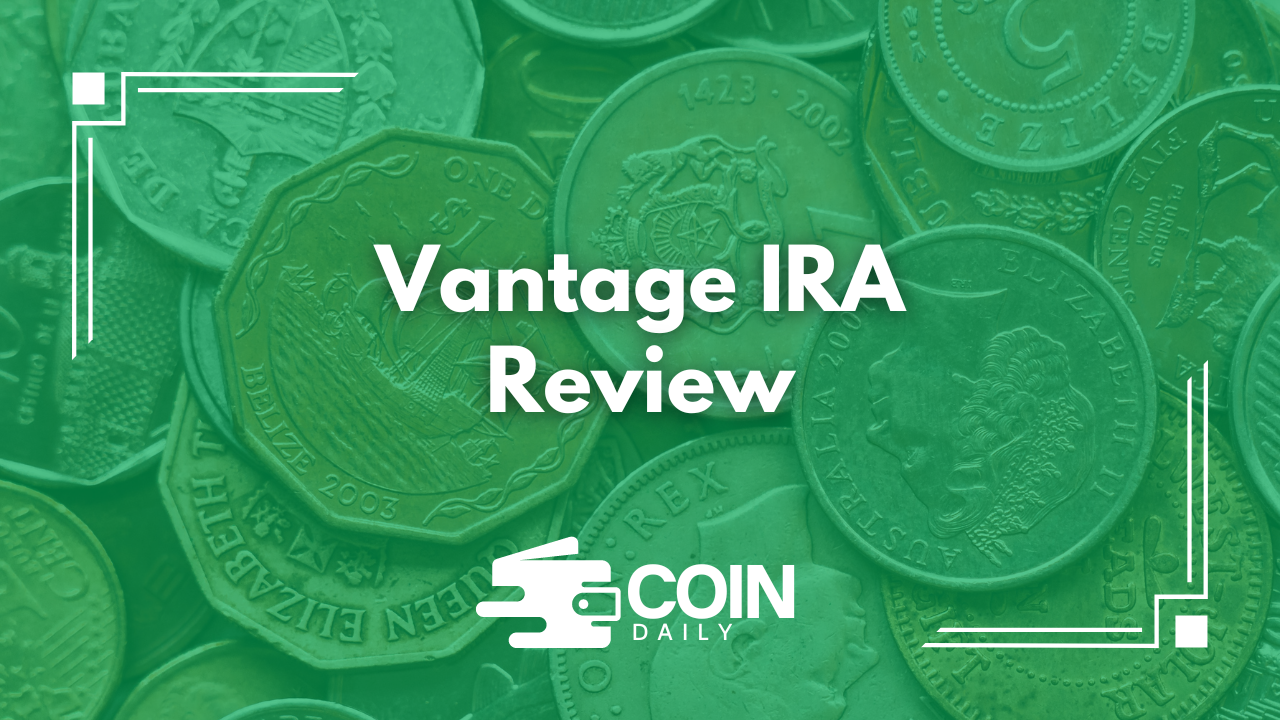Are you seeking to enhance your retirement savings? Vantage IRA may present the solution you require.
This investment platform offers distinctive features that provide tax advantages, diverse investment options, and greater control over your financial future.
As with any investment strategy, it is essential to acknowledge the associated risks and considerations. This article will elucidate what Vantage IRA is, how it operates, its benefits and potential drawbacks, as well as the various account types available.
By the conclusion of this article, you will possess a clear understanding that enables you to make an informed decision regarding the suitability of Vantage IRA for your financial goals.
What is Vantage IRA?

Vantage IRA is a specialized financial service that enables individuals to take control of their retirement savings through self-directed IRA options. This approach permits account holders to diversify their investments beyond traditional assets, thereby establishing an individual retirement account that aligns with their financial objectives and retirement goals.
Vantage IRA emphasizes the provision of transparent custodial services and investment flexibility, enabling users to explore a variety of investment categories, including precious metals and cryptocurrency, while striving to maximize their long-term growth and financial independence.
How Does Vantage IRA Work?
Understanding the functionalities of Vantage IRA is essential for individuals considering the enhancement of their retirement savings through a self-directed IRA. The process initiates with account setup, during which clients can choose from a range of investment options that align with their risk tolerance and financial goals.
Once the account is established, Vantage IRA offers custodial services that ensure effective account management, allowing users to pursue various investment strategies that encompass traditional assets as well as alternative investments, including precious metals and cryptocurrency.
What Are the Benefits of Using Vantage IRA?
Utilizing Vantage IRA presents numerous advantages that can significantly enhance an individual’s retirement planning strategy. Among the primary benefits are the considerable tax advantages associated with various account types, including the Traditional IRA and Roth IRA, which facilitate tax-deferred or tax-free growth on investments.
Furthermore, Vantage IRA offers a diverse range of investment options, allowing users to diversify their portfolios with assets such as precious metals, cryptocurrency, real estate, and other alternative investments. This diversification can contribute to improved financial stability and long-term growth.
1. Tax Advantages
One of the most compelling reasons to consider Vantage IRA is the comprehensive array of tax advantages it offers, particularly for individuals looking to optimize their retirement accounts. The Traditional IRA provides tax-deferred growth, while the Roth IRA allows for tax-free withdrawals. These options enable investors to strategically formulate their tax strategies in order to maximize retirement income while ensuring compliance with regulations.
Additionally, Vantage IRA allows for varying contribution limits based on the selected account type, providing individuals with the flexibility to choose a plan that aligns with their financial objectives. For example, contribution limits for Traditional or Roth IRAs can significantly impact how investors manage their taxable income, making it essential to evaluate these options meticulously.
Understanding the nuances of withdrawal options—such as the penalties for early withdrawals associated with Traditional IRAs as opposed to the more favorable rules governing Roth IRAs—can further enhance financial planning strategies. By making informed decisions, individuals can not only secure a stable retirement but also reap substantial tax benefits throughout their saving journey.
2. Investment Options
Vantage IRA distinguishes itself through its extensive range of investment options, enabling account holders to diversify their portfolios beyond traditional stocks and bonds. By offering access to alternative investments such as precious metals, cryptocurrency, and real estate, investors can construct a customized investment strategy that aligns with their risk tolerance and long-term financial objectives.
Incorporating commodities like gold or silver into a portfolio serves as a hedge against inflation and market volatility, thereby enhancing overall resilience. Additionally, the inclusion of cryptocurrency provides the potential for significant returns, allowing investors to take advantage of the digital currency’s growth in response to evolving market trends.
Investing in real estate through Vantage IRA can yield both passive income and capital appreciation over time. With such a diverse array of investment categories available, individuals are enableed to make informed decisions that support their unique financial aspirations and contribute to a well-rounded, diversified investment portfolio.
3. Control and Flexibility
Another significant advantage of Vantage IRA is the enhanced control and flexibility it offers account holders regarding their retirement investments. Users can efficiently navigate the user interface to manage their accounts, execute trades, and adjust their investment allocations in response to market trends and personal financial objectives.
The platform features a user-friendly dashboard that enables individuals to monitor performance metrics in real time, facilitating knowledge-based decision making that aligns with their unique strategies. Furthermore, Vantage IRA incorporates robust account features, including customizable alerts and streamlined reporting tools, which collectively enhance the overall user experience.
Customer feedback underscores the intuitive design and responsive support, enableing users to maximize their investment opportunities fully.
This combination of accessibility and sophistication ensures that account holders possess the comprehensive controls necessary to optimize their retirement plans effectively.
Check Out the Best Gold IRA Company of 2024
There are over 200+ gold IRA companies in the US and among all of them, I believe Augusta Precious Metals is the best one so far.

Augusta Precious Metals ranks as the #1 gold IRA company in the US. And that’s for good reason.
They have some of the best product catalogs with gold, silver, platinum, and palladium products to offer. But the main highlight is their dedicated web conference and the added focus on client education.
Augusta has an A+ rating on BBB, 1000+ client testimonials, and has been awarded “Most Transparent Company” in 2023 by Investopedia.
No other company puts as much focus on educating their clients about the different aspects of gold IRAs as they do.
My own experience with them was amazing to say the least.
However, their minimum investment requirement is $50,000 which limits the number of people who can open a gold IRA with them. Still, if you have the budget, you shouldn’t look elsewhere.
What Are the Potential Risks of Using Vantage IRA?
While Vantage IRA offers numerous advantages, potential investors must remain cognizant of the risks associated with self-directed IRAs. Investment risks are a critical consideration in financial planning, as market volatility can have a substantial impact on account performance and returns.
Furthermore, it is essential to understand the fee structure, including any hidden charges, as this knowledge is vital for assessing the overall profitability of one’s investment strategy.
1. Market Fluctuations

Market fluctuations present significant investment risks for Vantage IRA account holders, as the value of alternative assets can exhibit substantial volatility. It is imperative for investors to understand how economic factors influence market trends and the potential implications for their retirement savings.
These fluctuations can result in unpredictable variations in the performance of various investment categories, including real estate, precious metals, and private equity. As market dynamics evolve, grasping the correlation between these assets becomes essential for effective investment allocation. A well-defined risk management strategy is critical for navigating these uncertainties, allowing account holders to adjust their portfolios in accordance with their individual risk tolerance.
By conducting comprehensive market analysis, investors can make informed decisions, thereby mitigating the impact of potential downturns and optimizing their long-term financial outcomes.
2. Fees and Expenses
Fees and expenses are critical factors to consider when evaluating Vantage IRA, as they can substantially influence investment returns over time. A thorough understanding of the fee structure, including account maintenance and transaction costs, enables investors to make informed decisions and explore low-fee alternatives.
Along with the standard fees, it is essential for clients to closely examine potential hidden costs that may arise during the investment process. These costs could include charges for account transfers, record-keeping, or inactivity, which might not always be explicitly disclosed.
By comparing these fees against industry standards, investors can assess whether Vantage IRA is genuinely offering a competitive advantage. Transparency in fee disclosures is paramount; therefore, potential investors should prioritize firms that emphasize clear communication regarding their fee structures.
Furthermore, exceptional customer service can significantly contribute to addressing any concerns related to fees, ensuring that investors feel supported throughout their financial journey as they navigate the complexities of performance evaluations.
3. Limited Withdrawal Options
Limited withdrawal options represent a critical consideration in the management of a Vantage IRA, as account holders may encounter restrictions regarding the timing and manner in which they can access their funds. Understanding the implications of these withdrawal options is essential for effective account management and ensuring a reliable retirement income.
For example, individuals must recognize that early withdrawals, typically taken before reaching retirement age, may result in substantial penalties and tax liabilities that could negatively impact their financial well-being.
Once account holders attain the age of 59½, they may enjoy a wider range of options; however, regulations continue to impose limitations on the type and frequency of withdrawals.
Navigating these withdrawal rules with care is crucial for maintaining optimal account performance over time, as this directly influences the overall retirement strategy and asset growth. Staying informed enables account holders to maximize their savings while minimizing potential tax implications.
How Do I Open a Vantage IRA Account?
Establishing a Vantage IRA account is a clear and systematic process aimed at equipping investors with the necessary tools for effectively managing their retirement savings.
The account setup entails selecting the type of IRA that aligns with one’s financial objectives, followed by the funding of the account and the selection of custodial services that complement the chosen investment strategy.
What Are the Different Types of Vantage IRA Accounts?
Vantage IRA provides a range of account types to address various retirement planning requirements, including the Traditional IRA, Roth IRA, SEP IRA, and SIMPLE IRA. Each of these options presents specific benefits and eligibility criteria, enabling investors to choose the account type that best aligns with their financial circumstances and retirement objectives.
1. Traditional IRA
A Traditional IRA is a widely recognized retirement account option that enables individuals to contribute pre-tax income, thereby offering significant tax advantages. Contributions to a Traditional IRA may be tax-deductible, allowing for potential tax savings during the contribution phase.
These accounts are specifically designed for individuals under the age of 70½, who can contribute up to the annual limit established by the IRS. This structure facilitates consistent growth over time through various investment strategies. The tax-deferred growth feature ensures that earnings remain untaxed until withdrawal, thereby aiding individuals in maximizing their savings potential.
When engaging in financial planning, it is crucial to understand the withdrawal rules and associated penalties, particularly regarding early distributions. Furthermore, account transfers can be executed without incurring tax consequences, simplifying the process of consolidating retirement savings. Ultimately, a Traditional IRA serves as a flexible means to achieve long-term financial objectives.
2. Roth IRA
The Roth IRA is a highly regarded option for retirement savings due to its capacity to facilitate tax-free withdrawals during retirement. This type of account enables individuals to contribute after-tax income, making it particularly advantageous for those who expect to be subject to higher tax rates in the future.
With contribution limits that are indexed for inflation, individuals can optimize their retirement income potential while also reaping the rewards of investment returns that accumulate tax-free over time. The eligibility requirements are clear and accessible, enabling a broad range of individuals to participate, particularly younger investors who stand to benefit significantly from compound growth.
By selecting a Roth IRA, individuals not only protect their financial stability but also ensure that their investments provide maximum benefits upon accessing funds in retirement, thereby preserving their wealth from the tax liabilities that frequently accompany traditional retirement accounts.
3. SEP IRA

A SEP IRA, or Simplified Employee Pension, is specifically designed for self-employed individuals and small business owners, offering larger contribution limits compared to traditional retirement accounts. This account type provides considerable flexibility in making contributions, which can vary based on business profits, thereby significantly enhancing retirement savings.
With contribution limits reaching up to 25% of compensation or a maximum of $66,000 for the year 2023, a SEP IRA presents a distinct advantage for those seeking to strengthen their retirement portfolios.
Eligibility for a SEP IRA is broad, accommodating business owners of various sizes as well as their employees, thereby fostering inclusivity in retirement planning.
The benefits of a SEP IRA extend well beyond tax advantages; it also serves as a robust tool for asset protection, safeguarding personal wealth while aligning with long-term retirement objectives.
By adopting this retirement strategy, individuals can not only secure their financial future but also ensure the ongoing viability and success of their businesses.
4. SIMPLE IRA
A SIMPLE IRA is an excellent retirement plan option for small businesses, as it combines straightforward administration with favorable contribution limits. Employers have the opportunity to match employee contributions, thereby enhancing the potential for retirement savings and promoting a culture of financial wellness within the organization.
In this arrangement, eligible employees can allocate a portion of their pre-tax income towards their retirement savings, enabling them to plan more effectively for their future. The employer’s contribution can take the form of either a matching amount or a flat percentage of employee salaries, offering flexibility while maximizing the benefits for employees.
To qualify for a SIMPLE IRA, companies must employ fewer than 100 individuals who earned at least $5,000 in the previous year. By providing this type of retirement plan, small businesses not only bolster their reputation as desirable workplaces but also enhance their financial health through increased employee satisfaction and retention.
A SIMPLE IRA represents a mutually beneficial solution for both employees, who are keen to bolster their retirement savings, and employers, who seek to foster a loyal and dedicated workforce.
What Are the Eligibility Requirements for a Vantage IRA Account?
The eligibility requirements for opening a Vantage IRA account differ based on the specific type of account chosen, with each category having distinct criteria related to income levels, contribution limits, and employment status.
It is imperative for individuals seeking to optimize their retirement savings through a self-directed IRA to thoroughly understand these requirements.
What Are the Alternatives to Vantage IRA?
When evaluating retirement savings options, it is imperative to consider alternatives to the Vantage IRA, such as Traditional 401(k) plans, Individual 401(k) accounts, and various self-directed IRA options.
Each of these alternatives presents distinct benefits and features that may better align with specific financial objectives and investment strategies.
1. Traditional 401(k)
The Traditional 401(k) is a widely utilized employer-sponsored retirement plan that permits employees to contribute a portion of their salary on a pre-tax basis, frequently supplemented by employer contributions. This tax-deferred growth option can significantly enhance retirement savings over time.
The contribution limits for a Traditional 401(k) allow employees to accumulate a substantial amount annually, thereby establishing a solid foundation for financial stability in retirement. Numerous employers offer matching contributions, which can effectively increase the total savings, serving as a compelling incentive for employees to invest in their future.
It is also crucial to understand the tax implications associated with this plan. Contributions reduce taxable income for the year, while withdrawals during retirement are taxed at the individual’s current rate. By implementing effective investment strategies within this framework, individuals can strategically navigate their path toward a more secure retirement income.
2. Individual 401(k)
An Individual 401(k), commonly referred to as a solo 401(k), is specifically designed for self-employed individuals and offers higher contribution limits compared to Traditional and Roth IRAs. This type of account facilitates both employee and employer contributions, thereby maximizing the potential for retirement savings.
This distinctive structure not only enhances opportunities for savings but also provides flexibility in financial planning, enabling individuals to customize their investments according to their specific goals. For the 2023 tax year, self-employed individuals may contribute up to $66,000 (or $73,500 for those aged 50 or older), significantly augmenting their retirement savings. Additionally, the tax advantages associated with contributions can reduce taxable income, potentially resulting in a lower tax liability for the year.
With a variety of investment options available, including stocks, bonds, and mutual funds, this account serves as a powerful instrument for developing a diverse and robust portfolio aimed at long-term wealth accumulation.
3. Self-Directed IRA
A Self-Directed IRA offers investors significant investment flexibility by allowing them to select their own assets, which may include real estate, precious metals, and alternative investments. This type of account enables individuals to actively manage their retirement savings while providing enhanced asset protection.
By facilitating a wide range of investment options, from tax liens to privately held companies, this retirement account promotes strategic approaches that are aligned with the investor’s financial objectives and risk tolerance.
Compliance with IRS regulations is essential for maintaining adherence and avoiding penalties, underscoring the importance for account holders to understand the operational requirements associated with a Self-Directed IRA.
Numerous account holders have enthusiastically shared their success stories, illustrating how a Self-Directed IRA has not only diversified their portfolios but also significantly improved their retirement strategies. The ability to manage investments independently has encouraged a deeper engagement with one’s financial future.
If you want to learn about identifying gold IRA scams, I recommend getting this free checklist. It will equip you with the knowledge you need to avoid potential gold IRA scams.
Frequently Asked Questions

What is Vantage IRA Review?
Vantage IRA Review is an online platform that allows individuals to open and manage their Individual Retirement Accounts (IRAs) in a convenient and seamless manner.
How do I open an account with Vantage IRA Review?
To open an account with Vantage IRA Review, simply visit their website and follow the easy steps to set up your IRA account. You will need to provide some personal information and choose the type of IRA you want to open.
What types of IRAs does Vantage IRA Review offer?
Vantage IRA Review offers a variety of IRA options, including Traditional, Roth, SEP, and SIMPLE IRAs. Each type of IRA has its own unique features and benefits, so it is important to research and choose the one that best fits your financial goals.
Are there any fees associated with using Vantage IRA Review?
Yes, there are fees associated with using Vantage IRA Review. These fees include a one-time account set up fee and an annual account maintenance fee. However, these fees are competitive and are used to provide top-notch services and support to their clients.
Can I rollover my existing IRA into a Vantage IRA Review account?
Yes, you can rollover your existing IRA into a Vantage IRA Review account. This process is simple and can be done online through their platform. Vantage IRA Review also offers assistance and guidance for those looking to rollover their IRAs.
Is Vantage IRA Review a reputable company?
Yes, Vantage IRA Review is a reputable company with many satisfied clients. They have been in the IRA industry for many years and have a strong track record of providing excellent services and support to their customers. Their platform is also highly secure, ensuring the safety of your investments.



